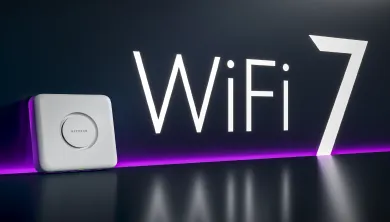

What is WiFi 7 for Business?
MAKING MULTI-GIGABIT SPEEDS FOR YOUR ENTIRE ENVIRONMENT A REALITY
Today's multi-gigabit internet plans are quickly outpacing current WiFi technology. WiFi 7, also known as IEEE 802.11be represents a revolutionary change. The new standard, dubbed EHT for Extremely High Throughput, will finally make true multi-gigabit WiFi throughout high density environments, such as offices, hospitality or educations spaces, a reality with faster speeds, less interference, and better performance for today's many high-bandwidth online activities.
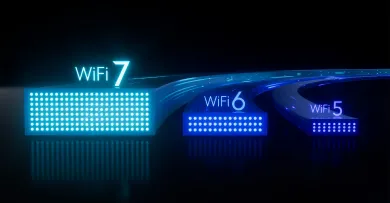
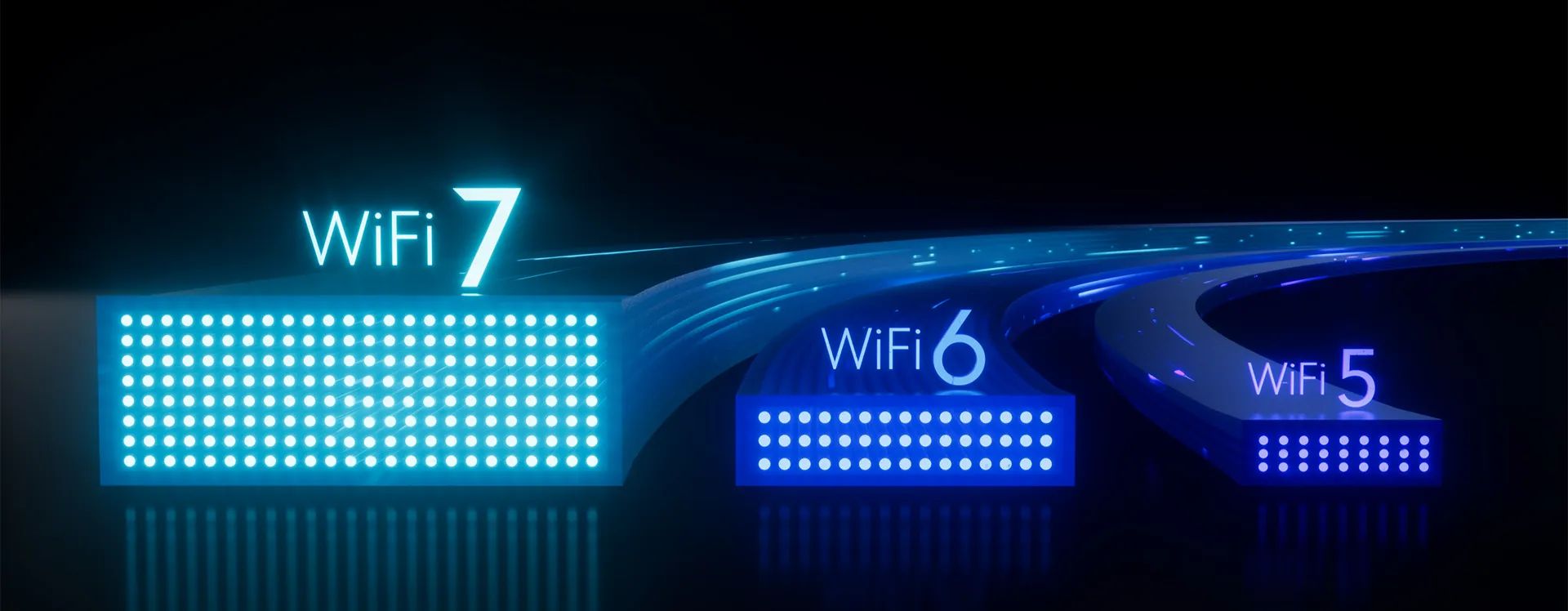
Advanced WiFi for advanced business
See the difference between WiFi 7 and earlier generations in the chart below.
For an even more detailed comparison between WiFi 6 and WiFi 7, read the full article here.
WiFi 5 |
WiFi 6 |
WiFi 6E |
WiFi 7 |
|
|---|---|---|---|---|
|
Introduced |
Introduced 2013 |
Introduced 2019 |
Introduced 2021 |
Introduced 2023 |
|
IEEE Standard |
IEEE Standard 802.11ac |
IEEE Standard 802.11ax |
IEEE Standard 802.11ax |
IEEE Standard 802.11be |
|
Max Speed |
Max Speed 3.5 Gbps |
Max Speed 9.6 Gbps |
Max Speed 9.6 Gbps |
Max Speed 46 Gbps |
|
Bands |
Bands 2.4 GHz, 5 GHz |
Bands 2.4 GHz, 5 GHz |
Bands 6 GHz |
Bands 2.4 GHz, 5 GHz, and 6 GHz |
|
Multi-Link Operation |
Multi-Link Operation No |
Multi-Link Operation No |
Multi-Link Operation No |
Multi-Link Operation Yes |
|
Security |
Security WPA 2 |
Security WPA 3 |
Security WPA 3 |
Security WPA 3 |
|
Channel size |
Channel size 20, 40, 80, 80+80, 160 MHz |
Channel size 20, 40, 80, 80+80, 160 MHz |
Channel size 20, 40, 80, 80+80, 160 MHz |
Channel size 20, 40, 80, 80+80, 160MHz, 320MHz |
|
Modulation |
Modulation 256-QAM-OFDMA |
Modulation 1024-QAM-OFDMA |
Modulation 1024-QAM-OFDMA |
Modulation 4096-QAM OFDMA |
|
MIMO |
MIMO 4X4 MIMO, DL MU-MIMO |
MIMO 8X8 UL/D/ MU-MIMO |
MIMO 8X8 UL/D/ MU-MIMO |
MIMO 16X16 MU-MIMO |
WiFi 7 Key Features and Benefits

5x faster speeds
than WiFi 6E
WiFi 7 increases maximum speeds from 9.6Gbps to a stunning 46Gbps, so you can take full advantage of today’s ultra-fast internet plans with gigabit-plus performance on your devices.

2x maximum bandwidth
320MHz high-capacity channels
New, ultra-wide bandwidth means double the speed to your devices. WiFi 7 smart phones can get speeds up to 5Gbps. This opens up exciting new possibilities for AR and VR applications. 1.2GHz spectrum in 6GHz band makes 320MHz ultra-wide band possible and also allows for more routers to operate in congested neighborhood without stepping on each other.

Significantly lower latency
for real-time responsiveness
Latency has a noticeable effect on real-time activities like gaming and video conferencing. WiFi 7 dramatically upgrades current gen experiences and opens the door for immersive next gen AR and VR.

20% more data transmission
with 4096 QAM modulation
Modulation, simply put, is the process of converting data into WiFi radio waves. A jump from 10-bit to 12-bit data modulation packs in 20% more data at a time for crystal-clear video streaming, Zoom calls and more.
What new innovations come with WiFi 7?
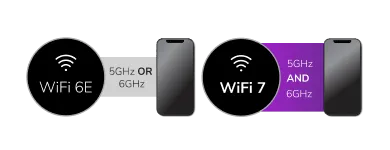

MULTI-LINK OPERATION
The power of two
WiFi 7 taps both 6GHz and 5GHz WiFi bands at once to avoid network traffic and keep you connected if you move out of range of one band. This feature, called multi-link operation, also enables devices to simultaneously send and receive data across both WiFi bands, increasing throughput.
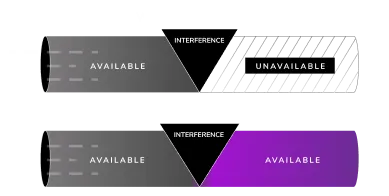

PREAMBLE PUNCTURING
Outsmart WiFi interference
Did you know your neighbors' WiFi might be slowing your network down? With previous versions of WiFi, any channels with interference become unavailable. Preamble puncturing allows your WiFi to slice off part of a channel to transmit your data, if the interference isn’t occupying the entire channel, greatly reducing network congestion.
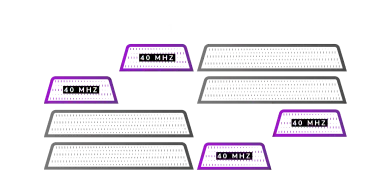

MULTIPLE RESOURCE UNITS (MRU)
Reduced queueing
With this new WiFi 7 feature, MRUs can be assigned and combined to a single user, improving the transmission efficiency. With the help of Preamble Puncturing, MRU ensures that data travels only on clear frequencies, increasing data rates and reliability in dense WiFi environments.
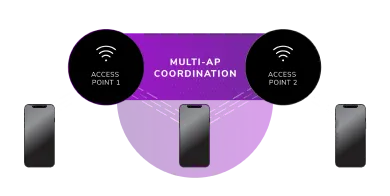

MULTI-AP COORDINATION
Setting the standard for APs
In legacy WiFi standards, there is no standard for how APs should coordinate data transmission times. Common functions, such as auto radio calibration and smart roaming, are vendor-defined. As a result, multiple bands operating in the same space, would cause interference and increase latency. With WiFi 7, it’s now possible to adjust the load between APs to balance radio resources. This reduces interference between APs and greatly improves the utilization of air interface resources.
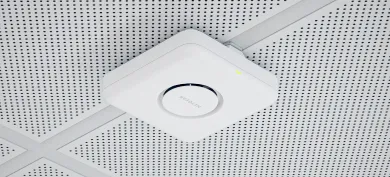
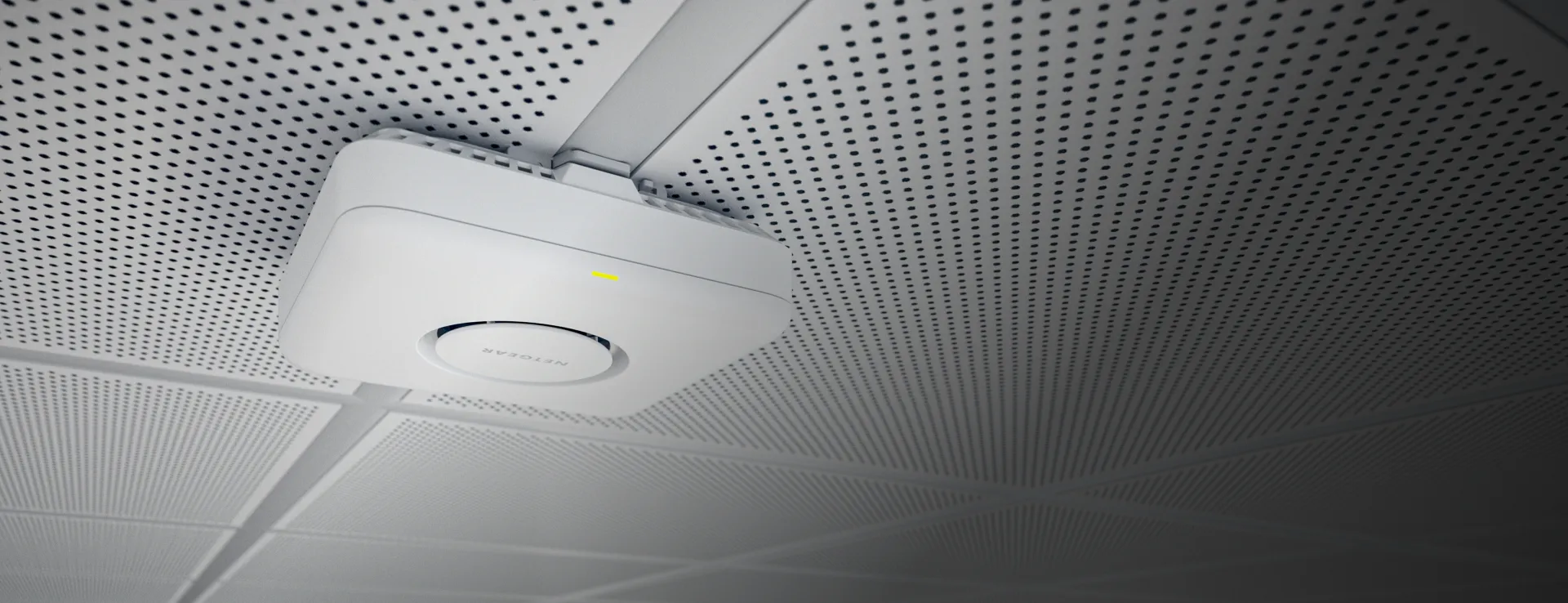
Advanced WiFi solutions for your business
See the new WiFi 7 access point with Insight Cloud Management
SOLUTIONS FOR ALL BUSINESSES
WiFi 7 FAQ
Yes, WiFi 7 is fully backward compatible. However, different generations of user devices will reap different levels of benefit. For example, only WiFi 6E and WiFi 7 devices will be able to use the ultra-fast 6GHz WiFi band. Similarly, only the newest WiFi 7 devices will be able to take advantage of advanced features like the 320MHz bandwidth and multi-link output.
WiFi 7 is up to 2.4x WiFi 6E and WiFi 6. Top theoretical speeds of 18.4Gbps can now be achieved for NETGEAR WiFi 7 access points. However actual speeds will be dependent on the number of streams supported, speed from the internet service provider, data plan, networking hardware, and network traffic.
Yes! Your current access point may be holding back your performance, particularly if you are on an older version of WiFi. WiFi 7 customer devices are now available, so if you are unsatisfied with your WiFi performance, consider an upgrade to the WiFi 7 standard. Many WiFi devices still use older WiFi standards but can get some benefits of WiFi 7. Check out the following links to learn more about WiFi 6 and WiFi 6E.
Yes! If you currently have a WiFi 5 access point, you will get immediate benefits from a WiFi 6, WiFi 6E, or WiFi 7 access point. With current internet service provider speeds and many high-quality hardware options available, there is still a substantial amount of time available to enjoy the benefits of WiFi 6 before you can truly experience all the benefits WiFi 7 has to offer. However, only WiFi 6E and WiFi 7 access points can provide ultra-fast 6GHz band WiFi for the latest phones and computers. WiFi 7access points will future proof your business and devices with next-level WiFi capabilities.
WiFi 7 offers significant improvements to speed and bandwidth, along with a host of underlying technological improvements designed to make your WiFi work smarter and more efficiently. These benefits are outlined in the article above.



